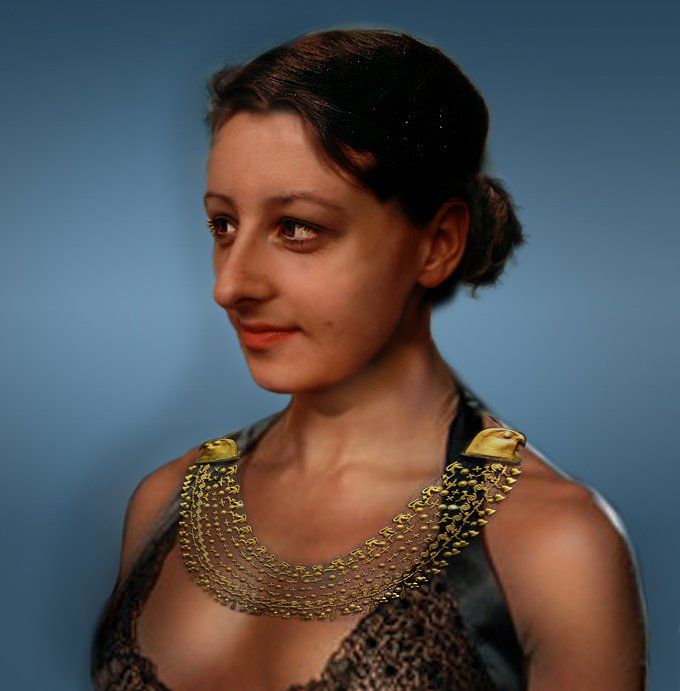Queen Cleopatra was the last member of the Ptolemaic dynasty that ruled Egypt between 323 BCE and 30 BCE.
In Western culture, she is primarily remembered as the lover of Julius Caesar and Mark Anthony, two of the most famous Roman generals of the time.
To Arabs and Africans, however, it is her intellect as well as her diplomatic and linguistic skills that she is most remembered for.
It is worth noting that Cleopatra was not the only ancient Egyptian queen. However, she is by far its most famous.
Two thousand years since her death, her life still fascinates many people the world over.
Queen Cleopatra biography
The exact year of Cleopatra’s birth is unclear. The consensus among historians is that she was born either in 70 BCE or 69BCE.
Her father, Ptolemy XII, was an Egyptian king and a member of the Ptolemaic dynasty that had ruled Egypt for close to three centuries.
The founder of the dynasty was Ptolemy I, a general of Alexander the Great who took over Egypt following Alexander‘s death in 323 BCE.
Queen Cleopatra was, therefore, an ethnic Macedonian, not Egyptian.
Following her father’s death in 51 BCE, she became a co-ruler of Egypt with Ptolemy XIII, her younger brother who also became her husband.
The two, however, fell out because of Cleopatra’s attempts to monopolize power.
She lost in the ensuing power struggle and escaped to Syria. To regain power, she sought and received help from the powerful Roman general, Julius Caesar, who was just winding down his war with his nemesis, Pompey.
Together, they defeated Ptolemy XIII thus allowing her to return to power as a co-ruler with her other younger brother Ptolemy XIV.
Apart from being queen again, she also became Caesar‘s lover until his death in 44 BCE. She then became a wife of Mark Anthony, one of Caesar‘s generals.
Their relationship lasted from 41 BCE to 30 BCE when they both died after their defeat by Octavian, later Emperor Augustus Caesar.
What did Cleopatra actually look like?
As a lover of two of Rome’s most powerful men at the time, it has always been thought that Cleopatra was a woman of unbridled beauty.
That is certainly how she is portrayed in popular culture.
Her perceived beauty, however, is more of speculation than truth. In fact, it is most likely that she was a woman of average beauty by the standards of the time.
Surviving coins of ancient Egypt do not present a consistent image of the famed queen. In some, she is manly with hooked nose while in others she just has average looks.
This image of average looks is confirmed by the historian Plutarch who wrote that it is not her beauty that attracted her to powerful men but rather her character, intellect, sweet voice, and charm.
Julius Caesar and Cleopatra When they first met, Cleopatra was just 22 while Caesar was 52 and the most powerful man in Rome.
The age difference, however, did not stop her from charming her way into Caesar’s heart through a combination of wit, intellect, and sensuality.
So enthralled was Caesar by the young queen that he not only made her his lover but also restored her to the Egyptian throne.
Their relationship produced a son, Ptolemy Caesar or Caesarion (Little Caesar).
When Caesar returned to Rome in 47 BCE, Cleopatra followed him a few months later. She stayed in Rome with her son and brother until Caesar‘s assassination in 44 BCE.
Following her lover’s violent death she quickly returned to Egypt.
Queen Cleopatra death
Following Caesar‘s murder, Cleopatra was to again be actively involved in the ensuing chaos in Rome that ended with both her demise and the demise of the Roman Republic.
Following the victory of Octavian, Mark Anthony, and Lepidus over assassins of Caesar, Cleopatra again seduced Mark Anthony just as she had done with Caesar.
She soon became his wife and in her husband’s struggle with Octavian, took the side of Anthony.
The decision proved fateful as the war ended with both of them killing themselves after their defeat.
Even though legend has it that she enticed a poisonous snake to bite her, it is more likely that she died after taking poison that she always carried.
five myths unraveled about Cleopatra
1. Queen Cleopatra was smuggled in a rug
Into the palace comes from the overzealous pen of Greek biographer Plutarch, but it’s difficult to prove this happened.
It seems unlikely that Caesar, one of the most powerful men in the world, would have welcomed a suspicious package into his room and even if so, there’s no reason for her not to have emerged earlier and made a more elegant entrance.
2. Queen Cleopatra was a femme fatale
The idea that Cleopatra flittered between powerful men, wooing and manipulating with no idea of who fathered her children, is the result of an ancient smear campaign run against her by Roman officials.
In fact, there’s only evidence of her having been with two men: Julius Caesar and Mark Antony.
3. Queen Cleopatra was Egyptian
One of the most famous Egyptian pharaohs of all time wasn’t Egyptians at all, she was Greek.
Her family line is that of Ptolemy, one of the generals of Alexander the Great, and despite her family living in Egypt for over 300 years, she would have been regarded as Greek.
Queen Cleopatra was actually rare in that she could speak Egyptian, unlike many of her predecessors.
4. Queen Cleopatra wore a fake beard
The concept of female Egyptian queens sporting fake beards comes from the Egyptian belief that the god Osiris had a grand beard, prompting Egyptian pharaohs to do the same to establish themselves as divine beings.
But by the time of Queen Cleopatra this tradition had all but died out, and there’s no record of her donning a fake beard.
In fact, the only female pharaoh known to have worn one is Hatshepsut.
5. Queen Cleopatra died from an asp bite
This myth has gained momentum due to paintings of Queen Cleopatra holding a snake to her bosom as she passes away.
However, the accounts of this event are in some doubt, mainly because an asp will not cause a quick death as Queen Cleopatra’s was reported to be.
It is more likely she drank a combination of poisons. The idea that the asp bit her breast is certainly incorrect, as all ancient sources state it bit her on the arm.









